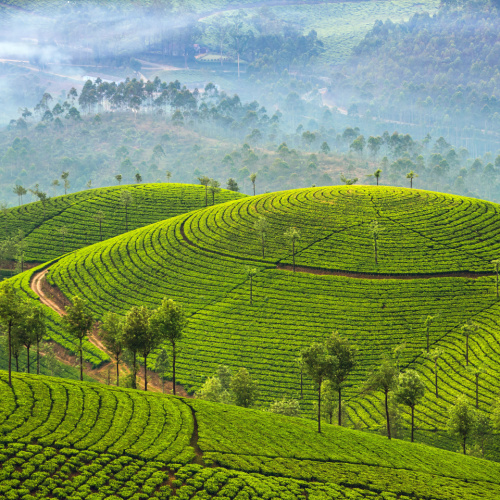
Mazur Travel/Shutterstock
When Is the Best Time to Visit India?
The best time to visit India is during the shoulder seasons of October to November and February to March. During these months, the weather is generally mild and sunny across most of the country, with fewer crowds and lower prices than during the peak winter and summer seasons.
Here are some of the benefits of visiting India during the shoulder seasons:
- Mild weather: India has a diverse climate, but the shoulder seasons offer mild and pleasant temperatures across most of the country. This makes it ideal for sightseeing, exploring, and enjoying the outdoors.
- Smaller crowds: The shoulder seasons are less crowded than the peak winter and summer seasons, so you’ll be able to enjoy India’s popular tourist attractions without having to deal with large crowds. This is especially important if you’re visiting popular destinations like the Taj Mahal, the Golden Triangle, and the backwaters of Kerala.
- Lower prices: Prices for flights, accommodation, and activities are generally lower during the shoulder seasons than during the peak winter and summer seasons. This means you can save money on your trip without having to sacrifice quality.
Here are some specific examples of how you can enjoy the most of India during the shoulder seasons:
- October to November: The weather in October and November is typically sunny and warm, with occasional showers. This is a great time to visit for sightseeing in the northern regions, such as Delhi, Agra, and Jaipur. You can also visit the southern regions, such as Kerala and Goa, for a beach vacation.
- February to March: The weather in February and March is typically mild and sunny, with occasional cold snaps in the northern regions. This is a great time to visit for trekking in the Himalayas, visiting the Golden Triangle, and exploring the deserts of Rajasthan.
Overall, the best time to visit India is during the shoulder seasons of October to November and February to March. During these months, the weather is mild and sunny, there are fewer crowds, and prices are lower.
 Average Temperatures by Month
Average Temperatures by Month
|
Jan |
Feb |
Mar |
Apr |
May |
Jun |
Jul |
Aug |
Sep |
Oct |
Nov |
Dec |
| Fahrenheit |
55°
|
61°
|
71°
|
82°
|
92°
|
100°
|
96°
|
93°
|
91°
|
83°
|
73°
|
58°
|
| Celsius |
13°
|
16°
|
22°
|
28°
|
33°
|
38°
|
36°
|
34°
|
33°
|
28°
|
23°
|
14°
|
Climate in India
Summer Season in India
Indian summers are typically hot, with temperatures often soaring high, particularly in the northern plains and central regions. This season is characterized by intense heat, with some areas experiencing dry conditions, while others may have high humidity. The southern and coastal regions tend to be slightly cooler. Summer is also the time for the famous mango season across many parts of India.
Rainy Season in India
The rainy season in India, also known as the monsoon season, brings substantial rainfall to most parts of the country, significantly impacting the agriculture sector. This season sees varying intensity and duration of rains across different regions. While it provides relief from the summer heat, it can also cause flooding and disruption in some areas. The landscapes turn lush green, offering a vibrant and rejuvenated natural environment.
Winter Season in India
Winters in India are generally mild, with cooler temperatures, particularly in the northern regions. Southern India experiences a comparatively warmer winter. This season is marked by lower humidity and is often considered the best time for tourism due to the pleasant weather. In some parts of the north, including the Himalayan region, winter can bring cold conditions with snowfall.
Our Recommendations
| Destination |
Jan |
Feb |
Mar |
Apr |
May |
Jun |
Jul |
Aug |
Sep |
Oct |
Nov |
Dec |
| India |
 |
 |
 |
 |
 |
 |
 |
 |
 |
 |
 |
 |






